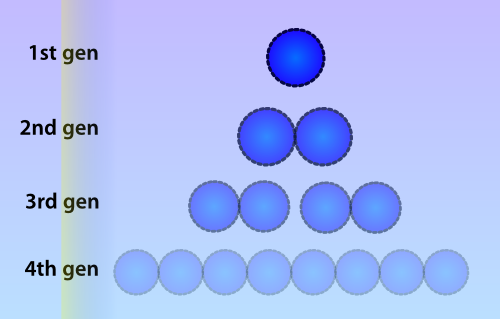Team:Amsterdam/project/features and applications
From 2012.igem.org
(Difference between revisions)
(Created page with "{{Team:Amsterdam/stylesheet}} {{Team:Amsterdam/scripts}} {{Team:Amsterdam/Header}} {{Team:Amsterdam/Sidebar1}} <div id="content-area"> <div id="sub-menu" class="content-block">...") |
|||
| Line 26: | Line 26: | ||
The volatilty of this memory design seemed a downside at first, but quickly opened our eyes to a very exciting feature of this system. By analyzing the fraction at the time of memory read-out, the time at which the signal was registered can be inferred. | The volatilty of this memory design seemed a downside at first, but quickly opened our eyes to a very exciting feature of this system. By analyzing the fraction at the time of memory read-out, the time at which the signal was registered can be inferred. | ||
| + | |||
| + | <h4>Concentration Indicator</h4> | ||
| + | On and off detection of a signal's presence is useful, but often in biology gaining insight in the quantity of a signal is even more relevant. By coupling different promoters with different strengths as responses to the same signal and assigning each promoter its own unique Memory Part, the range in which the strength of the signal is located can be measured. | ||
| + | |||
| + | <h4>Easy and Quick</h4> | ||
| + | A perk and very welcomed bonus of our system is that it is easy. It is easy in use, easy to read and straight forward to understand. For any circumstance specialized systems can be made which can be used in any condition for fast insight. | ||
| + | |||
| + | The most stripped down version, that could only sense a few signals of our system, could even be used on site. All you need is: our specialized bacteria, a centrifuge, a mini-prep kit, restriction enzymes, a gel and a UV tray. Bring a PCR machine and even the fully customized bacteria can be used! | ||
<h1>Applications</h1> | <h1>Applications</h1> | ||
| Line 38: | Line 46: | ||
<h4>Debugger</h4> | <h4>Debugger</h4> | ||
| - | |||
Science relies on experimentations. Besides simply measuring or tracking a substance or concentration biologists can encounter unexplainable or vague findings, especially when experimenting with modified or synthetically engineered proteins or genetic networks. Many general questions rise: Is the pathway I’m working with still active? Does my introduced or suspected protein accurately activate my gene? | Science relies on experimentations. Besides simply measuring or tracking a substance or concentration biologists can encounter unexplainable or vague findings, especially when experimenting with modified or synthetically engineered proteins or genetic networks. Many general questions rise: Is the pathway I’m working with still active? Does my introduced or suspected protein accurately activate my gene? | ||
| Line 44: | Line 51: | ||
<h4>Do It Yourself</h4> | <h4>Do It Yourself</h4> | ||
| + | The Cellular Logbook is quick and easy to use. A centrifuge, gel electrophoresis setup and pcr machine are all the machines needed to get the Cellular Logbook to work, bringing great promise for the Do It Yourself biologist. This form of biology is one that is gaining in popularity, and we will definately see more of it in the future. We suspect that our Cellular Logbook system can greatly attribute to this form of biology in the future. A farmer that might be worried about the fertility of his land before planting his crops can use the Cellular Logbook to detect for favorable and unfavorable conditions. In the Do It Yourself manner, the Cellular Logbook can also be used as a health check at home, or the detection of spoiled food. | ||
<h1>Global Challenges</h1> | <h1>Global Challenges</h1> | ||
Revision as of 03:48, 26 September 2012
 "
"






